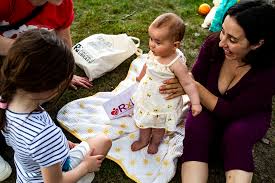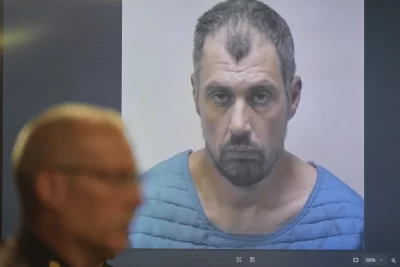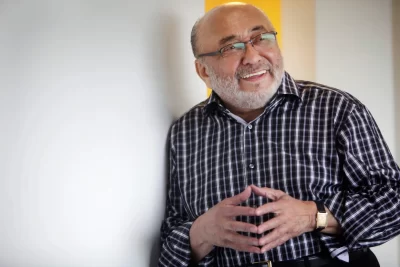
PONTIAC, Mich — Prosecutors on Thursday played a recording of a desperate 911 call by the father of a Michigan school shooter as they tried to show jurors how he quickly determined that the teen might be the killer.
“I have a missing gun at my house. … I raced home just to like find out, and I think my son took the gun,” James Crumbley said frantically, soon after a fruitless search of the house for the gun and ammunition.
“I don’t know if it’s him. I don’t know what’s going on. I am really freaking out. My son’s name is Ethan Crumbley,” the father said.
It was the last piece of evidence presented on the first day of James Crumbley’s involuntary manslaughter trial in suburban Detroit. He isn’t accused of knowing that 15-year-old Ethan planned to shoot up Oxford High School, but prosecutors allege that his gross negligence was a cause of the tragedy.
zury hears frantic 911 call from Michigan school shooter’s dad: ‘I have a missing gun’
AP correspondent Ed Donahue reports another parent is on trial in connection with a deadly school shooting in Michigan. Four students were killed and seven people were wounded on Nov. 30, 2021. The shooter’s mother, Jennifer Crumbley, was found guilty of the same involuntary manslaughter charges last month.
The Crumbleys are the first U.S. parents to be charged with having criminal responsibility for a mass school shooting committed by a child. “This case isn’t about bad parenting — it’s not illegal to be a bad parent. It’s not kids doing kid things,” assistant prosecutor Marc Keast told jurors. “We’re talking about preventable mass murder.”
Keast emphasized a series of key points during his opening statement. He noted that James Crumbley, accompanied by his son, bought a Sig Sauer 9 mm handgun four days before the shooting.
The father never told school staff about the purchase — or a trip to a shooting range that same weekend — when he and his wife were summoned to discuss a disturbing drawing on Ethan’s math assignment on the day of the shooting.
There was a gun on the paper that looked similar to the Sig Sauer, blood drops and a bullet, accompanied by the phrases: “The thoughts won’t stop. Help me.” “Emergency,” Jennifer Crumbley messaged her husband before the meeting.
“My god,” he responded when he saw the drawing.
But the Crumbleys didn’t take Ethan home, and the school, concerned that he might be suicidal, didn’t demand it. No one checked the boy’s backpack for a gun, however, and the nine-minute shooting happened that afternoon.
Evidence from James Crumbley’s wireless phone showed he made DoorDash deliveries after the meeting, investigator Ed Wagrowski testified. Crumbley didn’t search his home until after learning about the shooting.
James Crumbley missed an “incredible opportunity” to save lives that day, Keast said.
He displayed a picture of a gun lock, still in a package, for the jury.
“It was never used,” the prosecutor said.
“This nightmare — these murders — were preventable by him, foreseeable by him,” Keast said.
But defense attorney Mariell Lehman said James Crumbley was being portrayed in the wrong way.
“James Crumbley was not aware that his son had access to that firearm,” she told jurors. “You will hear testimony that access was not allowed in James Crumbley’s mind. You will not hear that James Crumbley even suspected that his son was a danger.”
Prosecutors also allege that the Crumbleys ignored their son’s pleas for help for mental distress. Ethan told a friend that James Crumbley’s response was to tell the boy to “suck it up,” according to text messages introduced by Wagrowski.
“I am mentally and physically dying,” Ethan told the friend in April 2021.
Before the day began, Judge Cheryl Matthews made rulings that could benefit James Crumbley. She said prosecutors can’t use text messages between son and mother that suggested he was having hallucinations about demons months before the shooting.
The messages were used as evidence at Jennifer Crumbley’s trial.
The first witness at James Crumbley’s trial Thursday was Molly Darnell, a faculty member who was shot by a bullet that pierced her office door. Darnell, one of seven people wounded that day, stood, removed a jacket and showed jurors the spot on her upper left arm.







